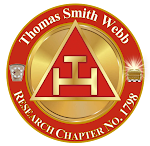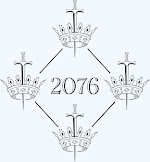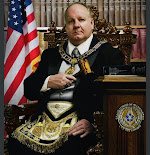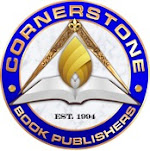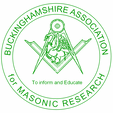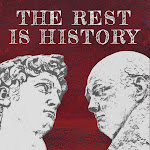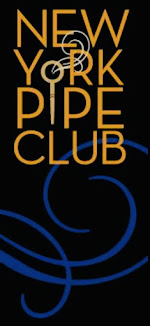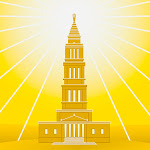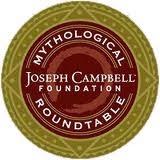Tuesday, December 2, 2025
‘Anti-Masonry roundtable next month’
I guess it’s okay to look into 2026 for upcoming events, and Alpha Lodge 729 in Ohio has something very promising planned for next month. From the publicity:
Anti-Masonic Round Table
Saturday, January 31
Alpha Lodge 729
Kettering, Ohio
$10 tickets here
Join MW Bro. Bill Carter, PGM for this riveting discussion on the anti-Masonic movement and how to turn it around. A boxed lunch will be offered for $10. Only 100 tickets will be offered, so don’t miss out.
“How to turn it around” intrigues me. Without a doubt, 2026 will be an apt occasion to discuss anti-Masonry*, as it will be the bicentennial year of the William Morgan debacle in New York, and the resulting scandal, political upheaval, and near collapse of the Masonic Order in the Northeast. Anti-Masonry will be with us always, thanks to the grifters, religious dingbats, and low IQ clods who come away from some YouTube video thinking they know more about Freemasonry than you, and I don’t see how that can be overcome. There are reasons Masonry transcends ignorance.
The roundtable is too far a drive for me, but if you’re in the area, check it out. Master Masons only.
*Look for the Magpie Mason at the September communication of New Jersey Lodge of Masonic Research and Education 1786 when I’ll discuss the Anti-Masonic Party’s progress in that state during the 1820s and ’30s.
Wednesday, November 26, 2025
‘The Revolution was televised’
 |
| The Petition by John Ward Dunsmore, oil on canvas, 1926. On exhibit in Washington’s Headquarters Museum in Morristown. |
If you sneeze, you’d miss it, but there is a reference to Freemasonry in the recent Ken Burns documentary after all.
The American Revolution was broadcast on PBS last week, and I finally caught up to the closing episode, titled “The Most Sacred Thing (May 1780 – Onward),” today. The longest of the six parts, this chapter extends briefly beyond the Treaty of Paris to place the Constitution and the Bill of Rights in relation to the war.
Freemasonry is not spoken of. It is neither in the narration, nor the voice-acting, not even in any interview. It’s visual and quick. And a non-sequitur.
At the 35:06 mark, while the narrator explains a mutiny on January 1, 1781, when approximately 1,500 Continental soldiers from Pennsylvania, encamped near Morristown, New Jersey, rebelled over their typical meager living conditions and non-existent pay, we see a Worshipful Master in the East. The disgruntled troops aimed to march on Philadelphia “to confront Congress with their grievances.” They had six artillery pieces. Wisely, the Pennsylvania legislature acted first and agreed to most demands, particularly the back pay, and this rebellion within the Revolution was quelled.
I don’t know how John Ward Dunsmore’s painting, The Petition, was chosen to be the wallpaper during the telling of this bit of history. I wonder if there had been a minute devoted to Freemasons’ Revolutionary significance that was omitted for time, and this 18-second panning out shot of the painting was the only aspect to survive the editing.
 |
| revolutionarywarnewjersey.com |
 |
| Detail of The Petition. Click to enlarge. |
The initiated eye will discern immediately this is a Masonic meeting. Worshipful Master Jonathan Hart is clearly seen seated in the East with the Master’s jewel about his neck. The Three Great Lights and Three Lesser Lights are in place, and the altar even seems to be the right size and shape for the period. George Washington is shown in profile seated in the north. He is known to have attended American Union in Morristown that day. (Click here if you have time.)
As a historical reference, The Petition is annoying as it depicts Alexander Hamilton and others who were not Masons in the scene, but, again, Dunsmore painted this in 1926, a time of great national patriotism in the country’s sesquicentennial year. The artist may have believed or hoped Hamilton and the others were Brothers. Masonic researchers then were even more rare than they are today, so there were too few sources of accurate information.
This is not the incorporation of Masonic history in this documentary I had hoped for, but it’s better than nothing, and there ought to have been something. I enjoyed the series overall, despite some errors and omissions.
Click here for an introduction to this subject.
The Petition can be viewed in person in the Morristown National Historical Park’s museum, inside the Revolutionary Room of the Washington’s Headquarters Museum (the Ford Mansion), at 30 Washington Place. It is on indefinite loan from the New-York Historical Society.
And American Union Lodge? Yes, it is still at labor! It meets at Marietta, Ohio and will celebrate its own 250th anniversary in February. I’ll be there, and hope to see you.
Sunday, November 23, 2025
‘Breakfast with the research lodge’
 |
| Uniform typical of Capt. John Ross’ company, Third New Jersey Regiment, commanded by Col. Elias Dayton. |
The next meeting of New Jersey Lodge of Masonic Research and Education 1786 is less than three weeks off. We’ll get together in Freemasons Hall in North Brunswick for a hearty Saturday breakfast and a somewhat truncated Regular Communication. (I think everyone will want to get on the road because of the many lodge installations that day.) From the publicity on Faceypage:
Saturday, December 13–The Worshipful Master will discuss “The Upcoming 250th, Or Putting the American Revolutionary War into Context.”
This will not be a recitation of the war’s events. Rather, we will go into the war’s origins, its historiographical background, and some different ways to study, understand, and appreciate it.
The talk will wrap up with Don’s current personal research on four Continental Army veterans and Freemasons from New Jersey: James Giles, Joseph Bloomfield, Richard Howell, and Andrew Hunter, Jr.
Business will include an update on the new website, and a recap of the John Skene Conference. Your 2026 dues payments will be accepted. Instead of a luncheon, we will gather at the lodge for breakfast.
 |
| Period painting of New Jersey militia man. Provenance unknown. |
So, that’s breakfast at 8:30 a.m. and the meeting at 9:30. Master Masons are welcome. Attire: suit & tie, plus apron.
Saturday, November 22, 2025
‘Visiting Quinta Essentia 500—and The Owl Shop’
 |
| ‘Brethren, be clothed.’ |
Before the meeting last Saturday of Quinta Essentia Lodge 500 recedes into foggy forgetfulness, let me share a few details of a fantastic evening in New Haven.
 |
| No nightmares in The Elm City Club on Elm Street. |
I have wanted to get up there for a visit for a number of years. I met Bro. Jay at his home in the northeast corner of New Jersey and he did the driving—kind of a haul, actually—into Connecticut. The lodge meets inside The Elm City Club, a private, members-only establishment that originated, if I understand correctly, as the Graduates Club, a social space for Yale University people. Located on Elm Street, it is situated in the center of the campus area. Elm City is New Haven’s nickname.
The plan was for the lodge to meet, close, and then have dinner in the same room, but signals got crossed and we dined in a larger space that surely was the more comfortable option—although it was weird having the wait staff circulating about while our speaker was presenting. The lodge meeting was brief. Quinta Essentia gained one more brother, as Bro. Rodney, Master of Shakespeare Lodge 750 here in Manhattan, was elected to membership. Huzzah! (They employ a unique method of balloting, involving two ballot boxes, that I’ve never seen before.)
After the meeting, we enjoyed cocktails and a fine social hour together during which selected brethren proposed toasts to the six Masonic credos shown in the blue circle on the coin below. While the Magpie Mason drew Enlightenment, I was preempted by another brother who accidentally spoke on that subject before it was my turn. He did a better job anyway.
 |
| Worshipful Master Jonathan Glassman’s commemorative coin is a hefty two inches in diameter and about a pound and a half in weight. |
Our keynote speaker was Chris Murphy of Vermont, who presented “The Traditional History: Freemasonry’s Foundational Mythos.” I envy gifted speakers, and Bro. Chris has the talent that eludes me. I didn’t take notes, but this was an explanation of how and why the Masonic Solomon’s Temple is not the same story as that found in the Bible. Our story differs and has many details, as you know, that are not Scriptural. I wouldn’t want to divulge too much here, but my take in one sentence: While we today do not accept the histories rendered in the Old Charges and by Anderson as accurate records, we should appreciate speculatively about how a Masonic DNA, divinely placed, nevertheless connects Adam to us. Just terrific!
Chartered in 2012, Quinta Essentia 500 is an Observant lodge. Read about that here.
 |
| History in a tobacconist. 268 College Street. |
Before arriving at The Elm City Club, Jay and I visited The Owl Shop, the storied tobacconist and bar on College Street that also has been on my list of places to be. I’ve seen Life magazine photos on the web of Yale men at their pipe club and of tobacco tins displaying the Yale “Y,” and this establishment, which opened in 1934, is connected to those. They sell cigars, naturally, and the air inside was thick with smoking aroma. But it wasn’t hazy and oppressing. Two days earlier, I caught the new Linklatter film. In it, the lyricist Lorenz Hart (Ethan Hawke) exclaims he loves the smell of cigar stores, and the environment of The Owl Shop undoubtedly is the kind of thing he’s talking about.
 |
| Whatever air cleaner they use is inconspicuous. Only the ceiling fans are obvious. Great place to relax, smoke, and drink. |
We sat down, had a round of drinks (I enjoyed a Warsteiner Dunkel while Bro. Jay was fortified by a reddish tea), and shared a cheese board. No smoking, as time didn’t permit it, but I purchased an ounce of Harkness Tower, their Balkan house blend, to bring home. I’m going to try some tomorrow.
 |
| An ounce of Harkness Tower to go. |
 |
| During the holidays, I’m going to try this rye. 100 proof! Zoinks! |
A great way to spend a Saturday! Unfortunately, New Haven really is just far enough away to not be a place to frequent, but edified by this experience, I don’t know why I wouldn’t visit the lodge and smoke shop at least once a year.
‘Recap of the researchers conference’
I’m still catching up on What I Did on My Summer Vacation blogging and, since it’s been two months already, let me report on William O. Ware Lodge of Research’s long anticipated “Exploring the Role of Masonic Research Lodges in the 21st Century” conference in Lexington, Kentucky nine Saturdays ago. Produced with the assistance of Lexington Lodge 1, the Rubicon Masonic Society, the Philalethes Society, and others, this day of panel discussions addressed six topics that mostly were for consideration of the future of these peculiar lodges we love so much.
New Jersey Lodge of Masonic Research and Education 1786 was represented by Bro. Sal Corelli and myself. (He and I had been bumping into each other all summer, first at the Masonic Restoration Foundation in Ontario, then the John Skene Conference, and again in Kentucky.) I guess I was representing The American Lodge of Research and Civil War Lodge of Research also.
 |
| The banquet room. |
The night before the conference, we gathered at Spindletop Hall for Rubicon’s Thirteenth Annual Festive Board. We guests were sad to hear how keynote speaker John L. Cooper, Past Grand Master of California, wouldn’t be joining us, but our hosts adroitly surrogated MW David Cameron of Ontario. He presented a most encouraging talk—a true story of his lodge’s efforts to prove the provenance of a cherished gavel gifted by Rudyard Kipling. I am kicking myself now because I didn’t take notes. Seating was crowded in the banquet room and I wasn’t planning on continuing all this blogging, so I ruled against pressing my notebook into my salad and elbowing my unlucky neighbor to the right while jotting down details. Nor did I shoot photos.
 |
| MW David Cameron |
The Festive Board was enthralling. Not everyone knows how to do this but, believe me, if every lodge hosted a monthly Festive Board of this excellence, any worries of membership retention would dissolve. Great food, the toasts, the Good Fire ritual, the songs, the fellowship, prayer, the chain of union are ingredients of a cheerful time together that only can inspire more time together.
 |
| Rubicon Masonic Society |
The following morning, back at Spindletop Hall, was the conference. To ease everybody into the forward-leaning subjects, Bro. S. Brent Morris led the first talk, “The Historical Role of Research Lodges & Societies: Lessons from the Past.” It was a comprehensive review. Since you are reading this, I trust you have some knowledge of the history and purposes of research lodges—how Quatuor Coronati 2076 in London was the first and was devoted to debunking the myths and legends that long had passed for Craft history, followed by a few others in England and Ireland, and then several in the United States in the 1930s. The newest, I assume, is Virginia’s Blue Ridge Lodge of Research 1738, set to labor several months ago. I’ll omit all that chronology and instead highlight something he said about some of our earliest literature being expressions of historiography. We’ve all read Rev. James Anderson’s take on Masonic history in his 1723 book The Constitutions of the Free-Masons, and probably all scratched our heads wondering how anyone could begin Freemasonry’s story with Adam, the first man, but that, after all, is one understanding of our history, demonstrating a desire for insights into our past at the start of the grand lodge era.
Session Two brought Bro. David L. Daugherty to the lectern to discuss “Bridging the Gap: Connecting Research Lodges with Regular Lodges.” Daugherty, of Ohio Lodge of Research, wanted us to understand how research is not necessarily education. The former, he says, concerns gaining understanding, and the latter is about sharing. (New Jersey’s lodge is named Lodge of Masonic Research and Education.) Do research lodges have a responsibility to build fundamental understandings for all Masons? He noted how some research lodges have warrants that allow them to travel about their jurisdictions. Audience member Bro. James Buckhorn of Indiana said his grand lodge gives new Master Masons a year’s free membership in their lodge of research. (Something other research lodges should emulate?) “We need to become better educators,” Daugherty said in encouragement. Perhaps that will guarantee the future of research lodges and grand lodges.
 |
| MW David Cameron of Ontario. |
Bro. David Cameron, Past Grand Master of the Grand Lodge of Canada in the Province of Ontario, moderated the next discussion on “Modernizing Masonic Research: Embracing Technology and Digital Tools.” Tech is not my thing, to put it simply, so I was relieved to hear the talk was in language I understood. Cameron urged us all to spend the necessary funds to digitize our research and make it available on the web. Bro. Buckhorn reminded us that digital data are not the ultimate answer some may think, because data can be saved with technologies that inevitably will become obsolete, therefore inventorying physical documents is a must. The platform TeamReach was praised. Bro. Adam Kendall, the new Senior Warden at QC2076, summarized Artificial Intelligence thusly: “A.I. is a shrimp trawler. It scoops from the bottom of the ocean.” Take heed.
For Session Four, Bro. Rich Hanson led us in conversation of “Relevance in the 21st Century: Addressing Contemporary Issues Through Masonic Research.” This was one I dreaded somewhat, having seen “researchers” cherry-pick Masonic historical notes to vindicate their personal politics. (By contrast, when I delve into our past, I’m not above smoking a clay pipe while wearing a yellow jacket and blue breeches.) But my fear was unfounded. Hanson spoke of research lodges as places for sociology where our work might find alignment with today’s issues outside the temple. The goal would be to gain understanding of young people so that Freemasonry might serve the next generation, rather than allow a demographic fate run its course.
 |
Rubicon Masonic Society Bro. Adam Kendall of QC2076, Philalethes, SRRS, etc. fame. |
Next, Bro. Kendall had his own subject to moderate: “The Art of Masonic Research: Developing and Sharing High Quality Work.” Adam should know. As editor of Heredom, a Blue Friar, an author of masterpiece papers, president of Philalethes, and an Honorary Member of Rubicon, he spoke firmly of best practices in conducting research and in writing and presenting research. Objective quality-control, passion, and the “Five C’s of Historical Thinking”—Causality, Change Over Time, Complexity, Context, and Contingency—are secrets to good work, square work.
 |
| Bro. Andrew Hammer |
After the conference, the Magpie Mason was invited to dine at the Lexington Club. Feeling like a pair of wet Chuck Taylors at a white tie affair, I nevertheless enjoyed an outstanding meal and conversation with the principals of the Rubicon Society and stars of the conference.
My deep thanks to Bro. John Bizzack, Master of W.O.W.; to Bro. Dan Kemble, the lodge’s Chaplain; to Rubicon Chairman Brian Evans; and to all who made the amazing weekend possible.
Finally, for more on the conference from its participants, just click the image at top. Also, a census of Masonic research lodge Masons is available for your consideration. I’m one of the team that’ll crunch the data, so please participate here.
Friday, November 14, 2025
‘As necessities might require and ability permits’
A: Yes.
Q. Where do you keep it?
A. In a bone box that neither opens nor shuts but with ivory keys.
1720s Masonic ritual—the “Enter’d ’Prentice’s Part”—as divulged in Masonry Dissected.
Magpie readers, I never ask for anything, but with this difference: While we’re slowing down at this time of year to contemplate the blessings for which we are thankful, I hope you will help a distressed Brother Mason.
Exactly six months ago, Bro. Tyler Vanice was hit by a truck while en route to his employment at the George Washington Masonic National Memorial in Virginia. It was bad. Today, he faces massive surgeries, especially on the “bone box” and “ivory keys,” and requires financial help.
Click here for the Go Fund Me page where you can read the details and, hopefully, “contribute to his relief as liberally as his necessities might require and your ability permits.” Perhaps inquire if the charitable arms of your Masonic groups might assist.
Bro. Tyler, to those who know him, is a true asset to our fraternity and our world. If you don’t know him, you’d be happy if you did.
Wednesday, November 12, 2025
‘U.K. grand lodges in the news this week’
Cheers to the media relations teams at both the grand lodges of England and Scotland, and to The Times, for their respective collaborations that produced fair news coverage of the Craft in the United Kingdom in recent days.
The Times, founded in 1785, self-identifies as “the oldest national daily newspaper in the U.K. and holds an important place as the ‘paper of record’ on public life, from politics and world affairs to business and sport.” The United Grand Lodge of England and the Grand Lodge of Scotland self-identify as two of the oldest Masonic grand bodies in the world. The former says it dates to 1717 (although it’s actually 1813) and the latter was established in 1736.
 |
| Sunday Times |
Unfortunately, there is a template in media coverage that cannot evolve: The Freemasons are opening their doors to the public for the first time to show there’s nothing to hide. In fact, the headline on the Sunday Times story by Marc Horne this week reads: “‘Nothing to hide’: freemasons to welcome public for first time.” Yesterday’s package from Times Radio lures us with “Inside the Freemasons HQ: The secretive society accused of ‘ruling the world.’”
To the reporters’ credit though, their work goes beyond the tease, and I think everyone can be pleased with the reportage.
The Scotland story seems to have been sparked by publicity of a jurisdiction-wide “open house,” in which all of the Grand Lodge of Scotland’s member lodges worldwide will, you know, “welcome members of the public for the first time” next February. The report from London, as you’ll see in the video, is thanks to Grand Secretary Adrian Marsh’s enterprising invitation to Darryl Morris to visit Freemasons’ Hall on Great Queen Street for a look around and a friendly, but firm, denial that Masons are reptilian.
Click here for the Scotland story. Click the image at top to see the Times Radio piece. (I assume the almost simultaneous publishing of the reports is coincidental.)
I know I post often on things Masonic in the U.K.—maybe too often—but, being from Publicity Lodge, this kind of thing excites me.
Labels:
GL of Scotland,
Journalism,
The Times (London),
UGLE
Sunday, November 9, 2025
‘Civil War Lodge’s plans’
Civil War Lodge of Research 1865 has its designs upon the trestleboard for next month and the ensuing year.
 |
| Matthew Szramoski |
Civil War Lodge will meet Saturday, December 6 at Babcock Lodge 322 in Highland Springs, Virginia for our own installation of officers. Our thirtieth anniversary arrives this Thursday, so the Stated Communication will be an extra celebration. As you know, CWLR meetings typically are built into a weekend of activities (I encourage all research lodges to incorporate this idea into your schedules) so there will be Friday and Saturday things to do outside the lodge room, to wit:
Friday, December 5
Dinner at 6:30 p.m.
Roberto Italian Restaurant in Sandston
Saturday, December 6
Babcock Lodge 322 in Highland Springs
Open Lodge at 10 a.m.
Installation at noon.
Lunch at one o’clock.
Cold Harbor Battlefield
in Mechanicsville at 3 p.m.
Dinner at Mexico Restaurant
in Sandston at 7 p.m.
Plans for next year (meetings will be in Virginia except where noted) are:
April 11: New Market Battlefield
July 18: Monterey Pass, Pennsylvania
August 29: Grand Master’s Research Lodge Official Visit at Hay Market Lodge 313
October 10: Fort Monroe
December 5: to be determined
I think all these are close enough for me to attend, so hopefully I’ll see you around.
Labels:
Bennett Hart,
Civil War LoR,
GL of Virginia,
Matthew Szramoski
Thursday, November 6, 2025
‘New leadership in New Jersey’
 |
Gill Raoul Calderon Grand Master Omar Morrisand Junior Grand Warden Glenn Visscher. |
Congratulations are in order upon the huge news pulsating right now from Atlantic City: Omar Morris is the new MW Grand Master of the Grand Lodge of New Jersey, and RW Glenn Visscher has been elected and installed in the Grand South. Huzzah!
I’ve known both for a long time (Omar is from my former lodge), and I couldn’t nominate Masons more worthy for these top jobs. Personally, being a refugee from that Grand Lodge, I believe the single most important task for the voting members of that jurisdiction is to continue electing decent human beings to their highest offices. The coming four years are looking bright indeed over there.
Congratulations to all.
UPDATE: It’s been brought to my attention that I can be misunderstood in the above to have implied that RW Glenn’s rival in the election is not a decent human being. No such thought occurred to me. Both of this year’s choices for Junior Grand Warden were outstanding, and the Grand Lodge would have benefitted if RW Ron Murad had prevailed too.
Labels:
Glenn Visscher,
GLNJ,
installation of officers,
Omar Morris
Wednesday, November 5, 2025
‘Time to join/renew to receive AQC 138’
It is time to renew with (or join) QCCC for 2026. Quatuor Coronati Correspondence Circle is the corporate side of Quatuor Coronati Lodge 2076 in London. Membership in the lodge is limited to a small number of scholars who are elected, but guys like you and me may join QCCC, the principal benefit of which is possession of the treasury that is Ars Quatuor Coronatorum, the lodge’s annual book of transactions.
QC2076 will meet one more time this year for its installation of officers next Thursday at Great Queen Street. Bro. Richard Gan will be seated in the Solomonic Chair and will present his inaugural paper. From the summons:
Printed Masonic Periodicals
in England 1793-2024
Richard’s paper tracks the progress and regress of Masonic publishing through to the
present day, a time when there is no longer any Masonic periodical with a national
circulation in England, the last having ceased hard-copy publication in December 2024
when it transferred online.
Richard L. Gan was born in 1950 Bradford to Polish parents. He was educated at the
Becket School, Nottingham, and graduated in Geology at London University, where he
also took a Master’s Degree in education; in addition, he holds a Degree in Management
Studies from the Open University. Richard’s professional career included teaching,
educational management and Masonic administration.
He retired in June 2010 as Deputy
Grand Secretary of the Grand Lodge of Mark Master Masons and thereafter was editor
of The Square until 2014.
Richard was initiated in Ribblesdale Lodge No. 8020 in Nottingham in 1977 and
promoted to Past Assistant Grand Director of Ceremonies in 2008. He is a Grand Officer
in all the major Orders of Freemasonry and in addition has served as the Grand Principal
Conductor of the Work (Assistant Grand Master) in the Grand Council of Royal and
Select Masters and as Provincial Grand Master in the Mark for Middlesex.
Richard lives
in Lincolnshire and writes and researches on subjects that include Victorian Freemasonry
and the Orders beyond the Craft. He was elected a full member of Quatuor Coronati
Lodge in 2014. He has been a regular Masonic speaker and has delivered more than fifty
talks and lectures on a range of Masonic subjects; he has authored four monographs, six
papers and eight books.
For next year’s meetings, the lodge has scheduled:
Thursday, February 19
Rob Hammond
“Does Freemasonry
Follow the Railroad?”
Thursday, May 14
Paul Calderwood
“Welsh Freemasonry
& the Unlawful Societies Act”
Thursday, June 25
Rod Taylor
“Masonic Firing Glasses”
Thursday, September 10
Daniel Johnson
“Solomon’s Temple in Myth & Ritual”
The 2026 Prestonian Lecture
Thursday, November 12
Installation Meeting
Installation Paper
Someday I will visit, I keep telling myself. Click here to join QCCC or click here to renew your membership.
Labels:
Ars Quatuor Coronatorum,
QC2076,
QCCC,
Richard Gan
‘2026 Prestonian Lecture’
 |
| Magpie file photo |
To my knowledge, he is not related to the Bro. Johnson in the post below.
Every year, one scholar is chosen for the distinction. The job is to travel about the jurisdiction, delivering the lecture in lodges, and raising funds for a charity. I see Bro. Johnson will appear at QC2076 next September. There’s nothing stopping them from traveling abroad, of course, and I have a history of hosting these outstanding workmen here in the New York City area. Maybe something can be arranged for 2026 too.
Labels:
Daniel Johnson,
KST,
Prestonian Lecture,
Ritual,
UGLE
Sunday, November 2, 2025
‘Freemason helps thwart knife attack’
 |
| Andrew Johnson |
W. Bro. Andrew Johnson, a 17-year Royal Navy veteran who served in the Iraq War, was driving. Upon hearing an alarm and learning of the violence onboard the King’s Cross-bound train, he had its route changed from express tracks (125 m.p.h.) to local, thereby allowing for a stop at Huntingdon that allowed British Transport Police to board, make arrests, and evacuate the wounded.
Eleven were reported injured. Johnson’s co-worker, who physically confronted an assailant, is in “a life-threatening condition,” according to the BBC.
Two suspects initially were apprehended, one of whom was released, for the stabbings and slashings of eleven victims, and one weapon has been recovered.
The government there somehow was able to proclaim very early that this is not a “terrorist incident.” Makes you wonder what would qualify as a terrorist incident.
After a little poking around, I think I can say Bro. Johnson is affiliated with Ceres Lodge 6977, of the Provincial Grand Lodge of Northamptonshire and Huntingdonshire. He also is a Royal Arch Mason.
God bless you, Bro. Andrew. Prayers for all the injured victims.
‘The Revolution WILL be televised’
Documentarian Ken Burns will have his latest, The American Revolution, debuted on PBS in two weeks. It’s a long shot, but I am hoping some mention of Freemasonry will fit in the six-chapter, 12-hour series coming November 16.
It’s only fair. Many of his previous works involve historical Freemasons but do not mention the fraternity, such as The Statue of Liberty (1985), Lewis & Clark (1997), Mark Twain (2001), The Roosevelts (2014), and, most recently, Benjamin Franklin (2022). I’ve always believed his style of filmmaking would be ideal for a story about Freemasonry itself. He excels at telling of generational histories (Baseball, 1994; Jazz, 2001; Country Music, 2019) and epochal events (The Civil War, 1990; The War, 2007; The Vietnam War, 2017).
Who better to chronicle the adventures of a folkway that germinated in sixteenth century Scotland and spread around the globe, influencing cultures and societies everywhere while embracing the giants of Western Civilization? Many years ago, I emailed his office pitching that idea, but received no reply.
Saturday, November 1, 2025
‘Webinar on New York genealogical research’
Sorry for the short notice but, if you can be available Thursday afternoon, I think you’ll find this webinar on research techniques profitable. From the publicity:
Unlocking the Mysteries:
An Introduction to Using
American Fraternal Records
in Genealogical Research
Thursday, November 6
6 p.m.
Free (registration is required)
Click here
Join us for a virtual webinar hosted by the New York Genealogical & Biographical Society about American Masonic and fraternal organizations, focusing on New York, and how their records can help you in your genealogical research.
Join Jeffrey Croteau and Sarah Shepherd of the Scottish Rite Masonic Museum & Library for a webinar about American Masonic and fraternal organizations, focusing on New York, and how their records can help you in your genealogical research.
The presentation will start with a brief introduction to popular fraternal organizations such as Freemasonry and Order of Eastern Star, Independent Order of Odd Fellows, Improved Benevolent and Protective Order of Elks of the World, and Knights of Pythias.
The presenters will discuss what types of fraternal records exist, go in-depth on where to find them, and talk about what kind of information these records may contain. This talk will be followed by a Q&A session. This virtual webinar will take place on Thursday, November 6, at 6 p.m.
The event, part of the Scottish Rite Masonic Museum & Library’s fiftieth anniversary programming, will be hosted by the New York Genealogical & Biographical Society.
This is a free online webinar, but registration is required.
Subscribe to:
Comments (Atom)


















